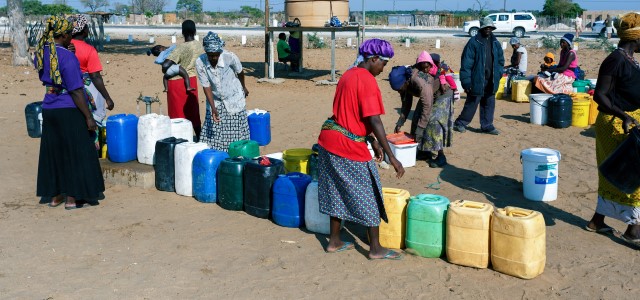The scope of the IDMP is to build climate resilience, reduce economic and social losses, and alleviate poverty in drought-affected regions of the world through an integrated approach to drought management. This approach aims to cut across sectoral, disciplinary, and institutional jurisdictions and is responsive to specific regional and national needs and requirements. For more information on IDMP, consult the programme’s page.
Objectives and Expected Results
The main objectives are to increase the capacities and drought-related knowledge of water managers together with managers of economic sectors that are vulnerable to drought losses (especially agriculture, energy and transport). The Programme’s capacity building strategy thus aims to contribute to the global coordination of drought-related efforts of existing organizations and agencies with regard to:
- Better scientific understanding and inputs for drought management;
- Drought risk assessment, monitoring, prediction, and early warning;
- Policy and planning for drought preparedness and mitigation across sectors; and
- Drought risk reduction and response.
Scope
The IDMP has three regional programmes in Central and Eastern Europe (IDMP CEE), in the Horn of Africa (IDMP HOA) and in West Africa (IDMP WAF). So far training has taken place in Burkina Faso, Kenya, Ethiopia, Romania, Hungary, Slovenia, Bangladesh, Czech Republic, and Guatemala. There are also regional initiatives recently established in South Asia, Central America, and South America.
Partners
Capacity building training activities are set up in collaboration with the regional and country water partnerships as well as supporting actors of WACDEP. Other institutional partners, including UNDP Cap-Net, support the IDMP regional initiatives. Find here a full list of partners.
Target Audience
The activities under the IDMP aim to increase the resilience of societies to droughts. Consequently, populations in drought prone areas, which in many cases belong to the poorer strata of society, are the ultimate target groups for the programme. On the planning and implementation level of the proposed programme, distinct groups of beneficiaries are addressed:
- Government organizations and agencies including financial institutions with improved capacities in the development and implementation of national drought policies;
- Institutions responsible for the development and management of land, water, and agriculture;
- Institutions responsible for developing preparedness plans and taking preventive actions;
- Regional and national organizations, agencies, and institutions engaged in monitoring, prediction, and providing early warning of drought;
- Government and non-governmental organizations and agencies responsible for the implementation of drought response (crisis management) activities at various levels; and
- Local, national, and regional institutions involved in awareness building, research, and education.
Delivery Methods
Workshops and training sessions are held jointly with partners and tailored to address drought challenges specific to an area. Drought resilience capacity is far from equal across the regions where the IDMP is active. Trainings are designed to respond to the needs and context of the requesting parties. For instance, in places where drought resilience systems are at early stages, training is centered around providing help for formulating drought plans and policies. IDMP is also providing technical expertise on drought risk management and monitoring systems, including modules on Standardized Precipitation Index (SPI).

